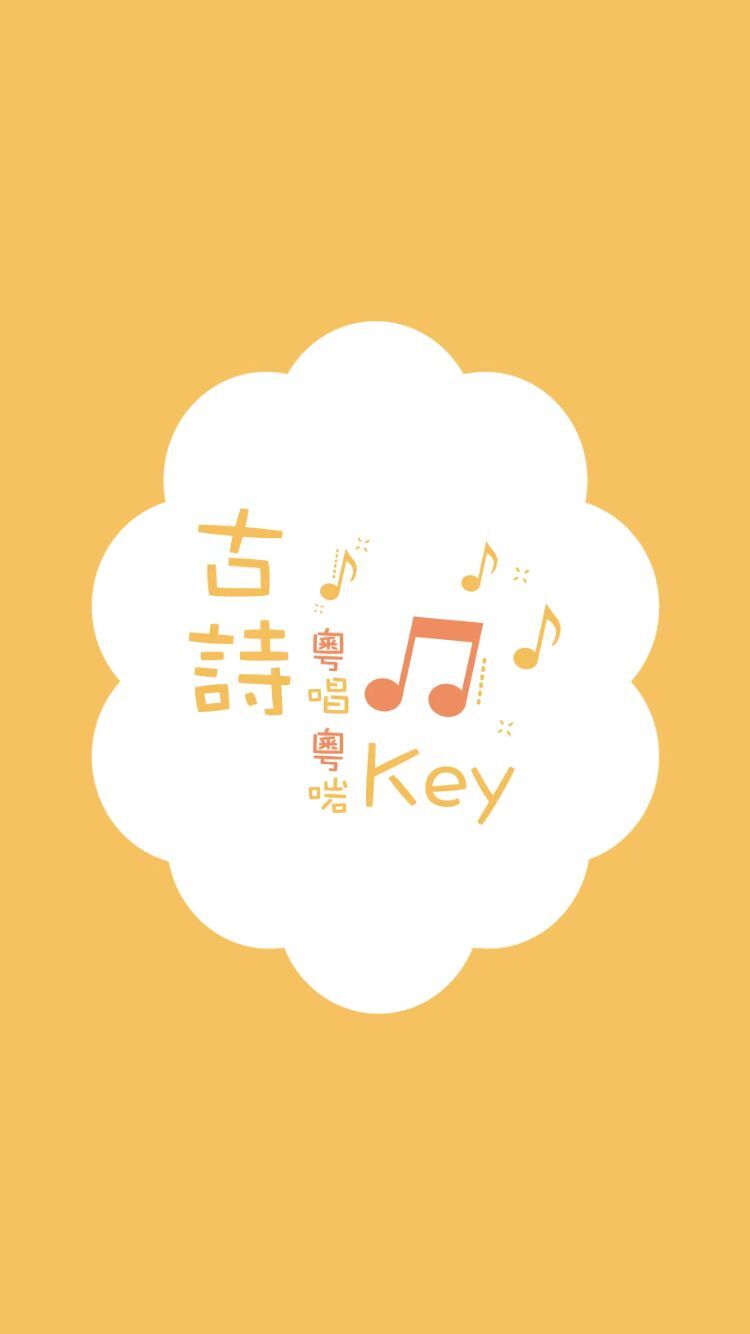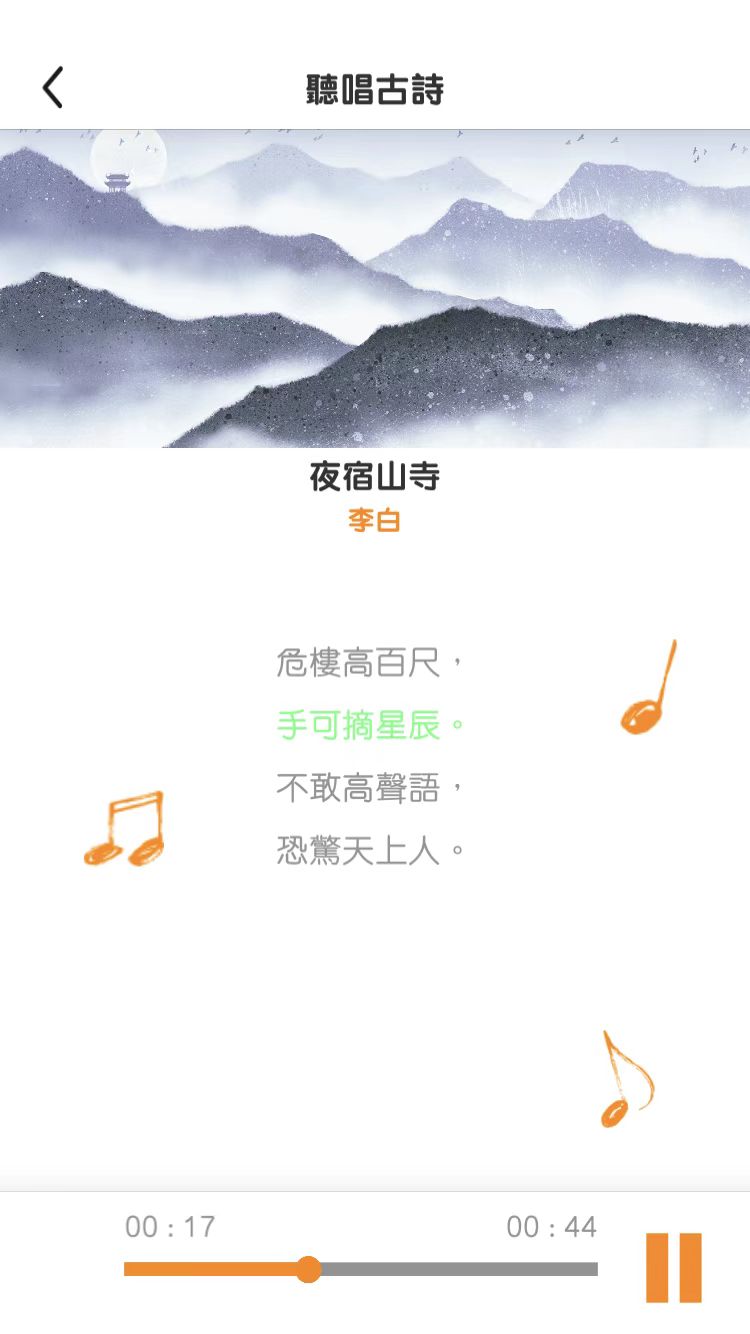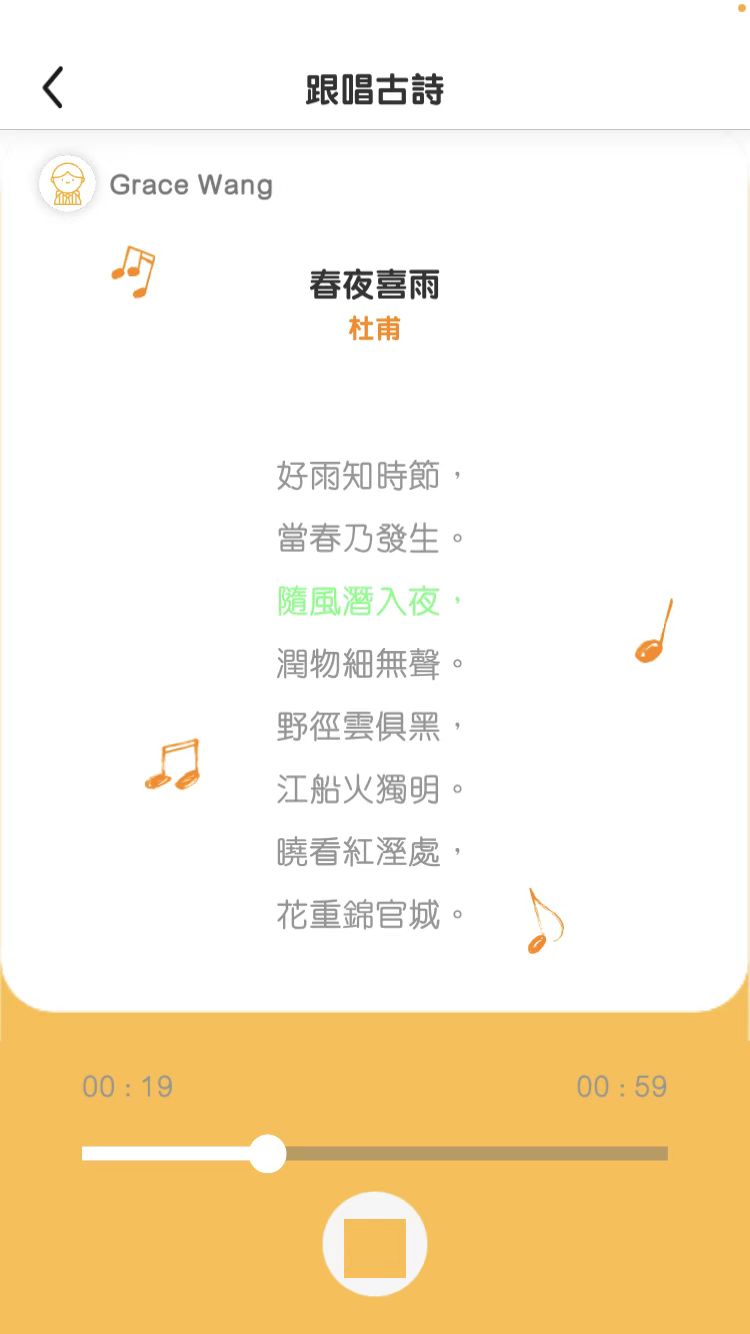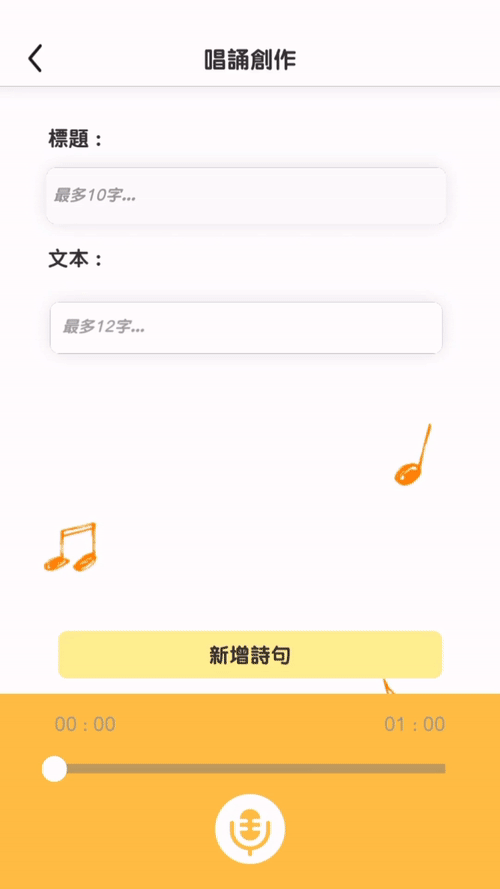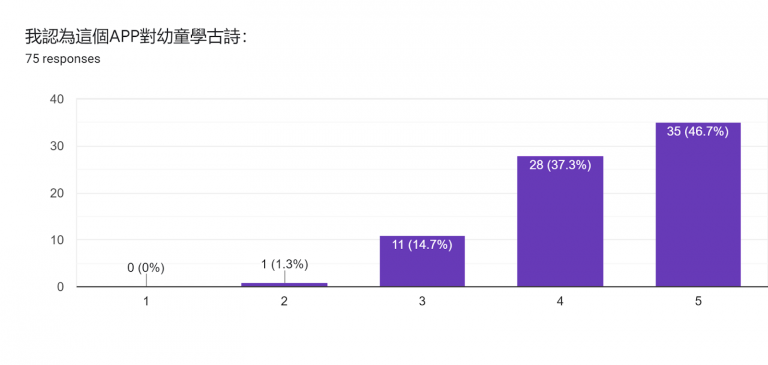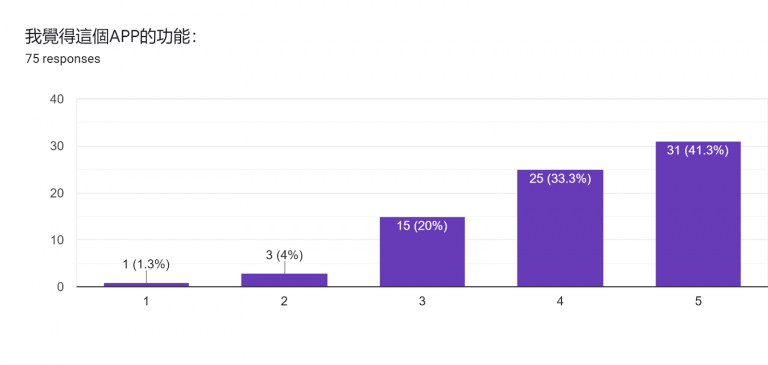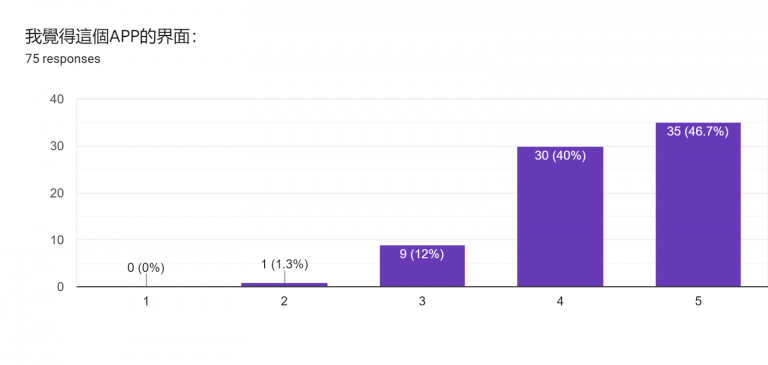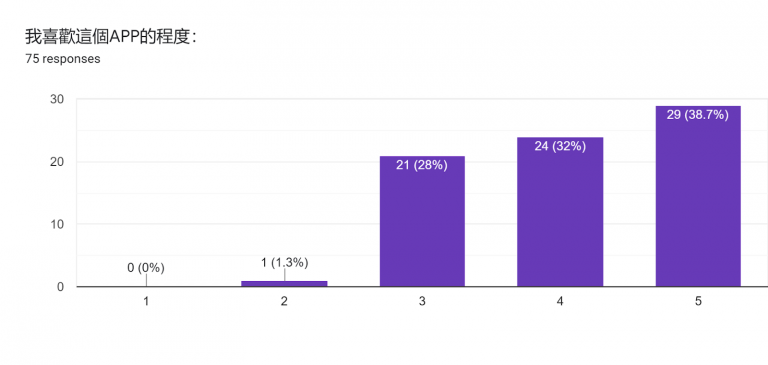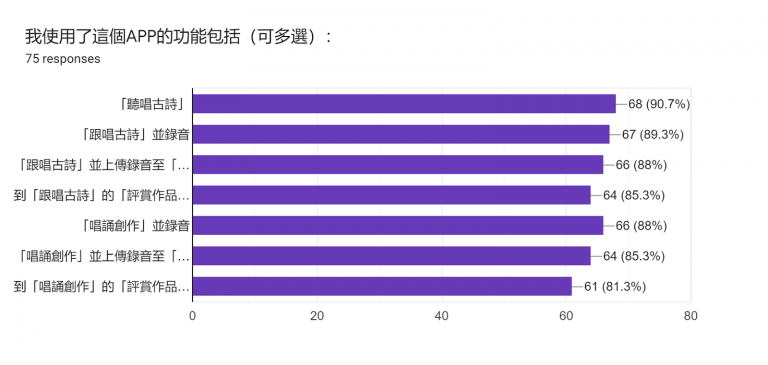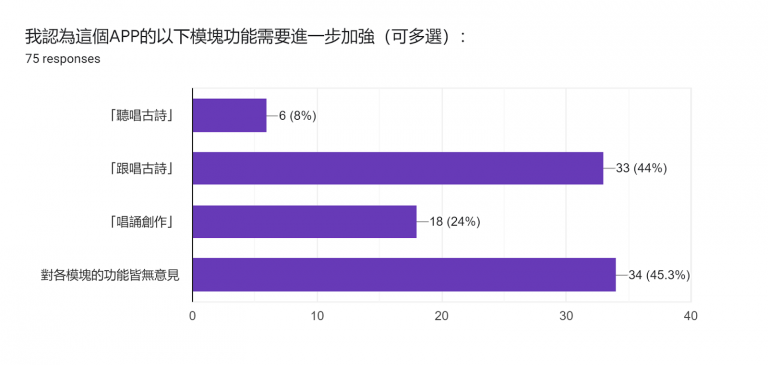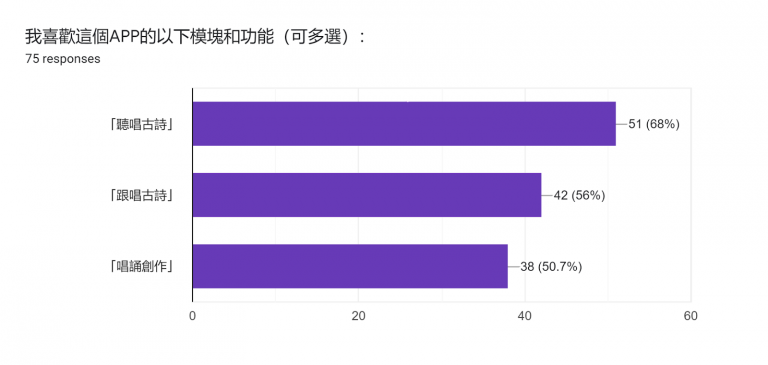Long Ago, up to Now:
Classical Chinese Poem Learning with a Mobile App
This poster introduces the mechanism behind the mobile APP “Classical Chinese Poems Sing Along (古詩粵唱粵啱Key)” and the applications in several courses, and feedbacks from students.
Classical Chinese Poems Sing Along
古詩粵唱粵啱Key
Course Context
Course Name:
CHI3918 Chinese Phonetics and Phonology (Blending Teaching)
CHI4577 Chinese Historical Phonology (Online Teaching)
CHI5198P Comparison and Analysis of Putonghua and Cantonese (Face To Face Teaching > Online Teaching)
Core e-Resources: Classical Chinese Poems Sing Along (古詩粵唱粵啱Key) (Apple Store, Google Play)
In all the courses mentioned above, the knowledge of Cantonese and Putonghua tones are important. How to raise students’ interest in studying tones is a challenge for these courses. Through the mobile APP “Classical Chinese Poems Sing Along (古詩粵唱粵啱Key)”, students of these courses can learn the features of Cantonese and Putonghua tones in speaking and singing, and they can apply this knowledge in composing singing style of classical Chinese poems, which can be further applied in Chinese language education at kindergartens and primary schools.
Research Results
Classical Chinese poems long ago: The written form (Chinese characters) of classical Chinese poems have passed down generation by generation. Without audio recording machines in ancient time, we do not know the exact oral form of these poems in ancient time. The most popular oral form of these poems is to read aloud in the present day. However, classical Chinese poems were probably in a singing style as their oral form in ancient time, which can be inferred by the strict rules of syllables per line, tones (e.g., “平仄”), and rhymes.
Reviving classical Chinese poems in Cantonese singing: Cantonese tones are preserved in speaking and singing. The main difference between speaking and singing is that speaking tones are associated with a declination intonation effect, while singing is showing an anti-declination effect. A reversed application of this linguistic observation is to turn the classical poems into a Cantonese singing style, which can enhance the memorization of the poems.
Mobile-APP-assisting teaching of classical Chinese poems: With the APP, the teaching materials (demonstration of the singing poems) are more easily to be obtained, the practicing methods can be more fun (e.g., Karaoke a poem), and there are more peer interactions (e.g., uploading for sharing and “likes”).
Feedbacks from students: most of them like the APP and appreciate the learning of tones.
“小朋友的歌聲很好聽,可以讓同是小朋友的親戚玩一下。”
“兒童的聲音讓人很有親切感。”
“有趣。”
“循序漸進,由學習到習得的過程。”
“音質清晰。”
“重複聽幾次後自己竟已經哼得出歌曲,很容易把一首詩輕鬆背下。”
“佈局設計清晰易懂,操作方便。”
“能加深的對詩詞的印象。”
“更容易將詩歌記入腦,有趣。”
“發現古詩原來吟誦起來別有一番自己的韻味在。在唱誦創作裏會發現別人一些很好聽的古詩聲音。”
“可以欣賞別人的創作。”
“可以欣賞其他人的創作和給心心支持。”
“可以跟唱古詩及聆聽自己的作品,感覺十分新奇。”
“很有趣,不再以死記硬背的方式學古詩。”
“很可愛。”
“觉得自己唱的同时既能练习粤语的发音还能把古诗背下,很有趣。”
“很自由。”
“聲音真好聽。”
“可以以後多多上載更多小朋友的聽唱古詩的例子。”
“在「跟唱古詩」的部分加上原本的音樂,以及在開始唱前加上倒數的表示,讓人知道什麼時候可以開始唱。”
“詩歌可以有更多選擇,歌曲可更多樣化。”
“跟唱古詩部分, 可將音樂聲和人聲 按比例提高,令聽回放時人聲更突出。”
“我認為app的開發很不錯,用音樂代替傳統的粵語詩歌朗讀,十分有趣(如果可以的話也希望可以再做一個模塊加入詩歌朗讀,這樣學習者可以更清楚的知道原本的知道發音);採用童聲歌唱,聽起來舒服自然,受眾面更廣。”
“希望可以在聽歌的時候能夠自由調節進度條。”
“我覺得若能在跟唱古詩部分可以加上背景音樂,讓錄音者更容易跟著音樂唱,不會早/遲入,這樣會更方便。因為錄音時沒有背景音樂聽著,令我錄了很多次都進不到正確的時間開始,哈哈。”
“APP設計清晰,甚好。”
“古诗可以更多 上传平台可以加个评分环节。”
“希望有伴奏選擇。”
“可以讓背景歌曲與錄音播放速度更加同步些。”
“有更多古詩可以聽唱 可以在幼稚園及小學推廣 小朋友會更容易及有動力去學習古詩。”
“very user-friendly! It’s very useful for kids to study.”
“能不能多建立一個板塊,就是用戶可以自己練習然後保存作品在自己那邊,而不是一定需要上傳錄音才可以保存。”
“創作部分或許可以嘗試增加音樂伴奏的調教功能。”
“已寫在模塊功能改善建議處,其他都很好。”
“若Android手機的返回鍵(三角形那顆)在APP界面中有回到上一頁的功能就更方便~”
“操作可以更加明確一點,有時候錄完音不知道在哪裡可以上傳。”
“可以增加更多古詩選項。”
“可否在唱誦創作方面增加音樂背景? ”
“可再新增多些古詩給用家唱頌。”
“可以适当增加几首古诗。”
“可以再多d聽唱古詩,因為很好聽! ”
“app或许可以再加入一些与诗词有关的图片并动态播放,从而在听唱时,可以更好地抓住孩童的兴趣。或者建议app也可以在一些重点字词方面,加上粤语粤拼,以便更好地学习。谢谢。”
“上傳作品的按鈕太隱蔽,可以放在更顯眼的地方。”
“設計理念很好。”
“可以多增添古詩詞作品,也可以引進一些歌手關於古詩詞旋律的創作,讓大家用廣東話去翻唱。同時建議在歌詞下面註音,有利於學習。”
“可以為現有古詩添加注釋,解釋詩句意思,并且加一個按鈕可以切換有注釋和無注釋頁面。”
“希望修改錄音嘅功能。”
Conclusions
The mobile APP “Classical Chinese Poems Sing Along (古詩粵唱粵啱Key)” revives the classical Chinese poems in a singing style, as what they were long ago. The up-to-now educational technology of mobile APP can help to enhance the accessibility of the learning and teaching materials as well as the interactions between the users. The “soul” of the APP design is linguistics, or humanities, while the “carrier” is modern educational technology. The positive feedback from the users, or the students encourage us to explore more effective ways to enhance language learning and teaching with technology.


